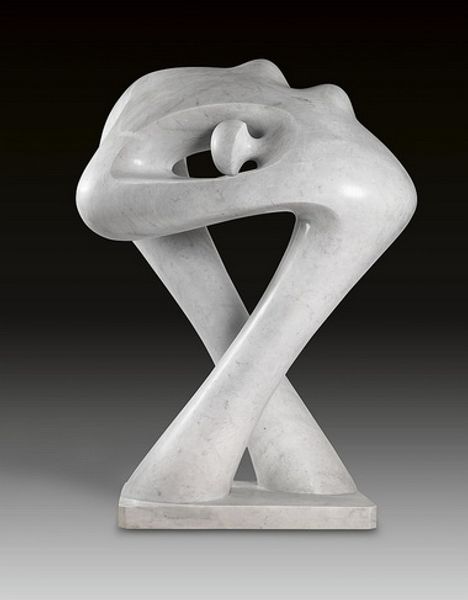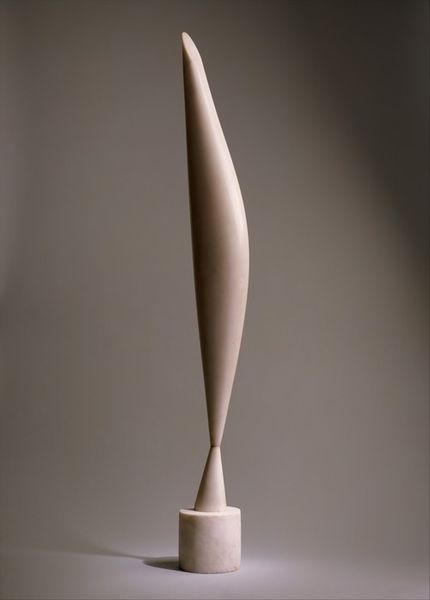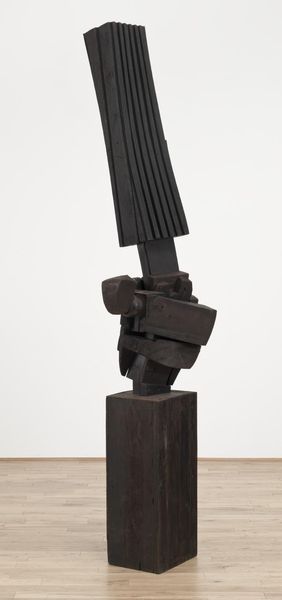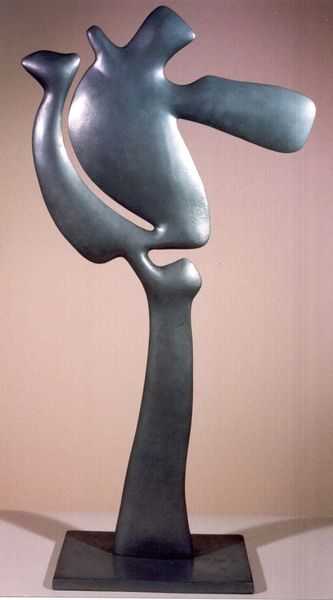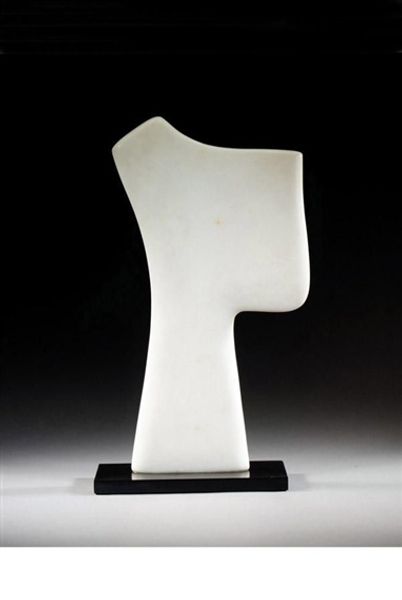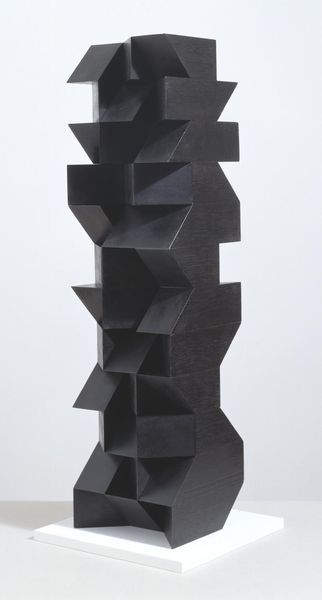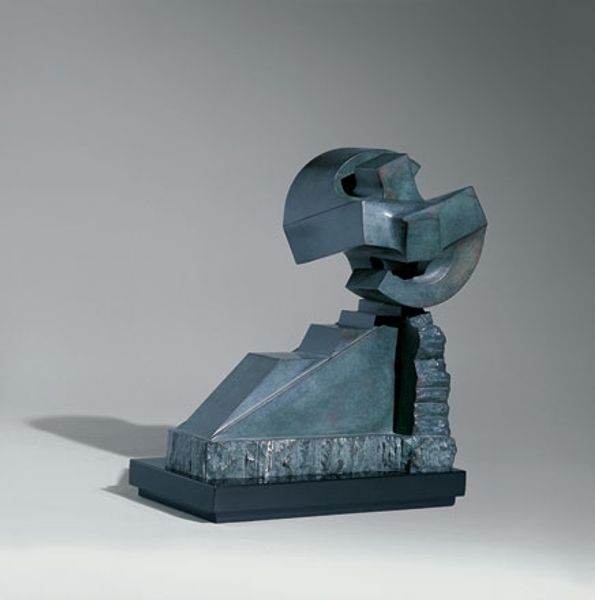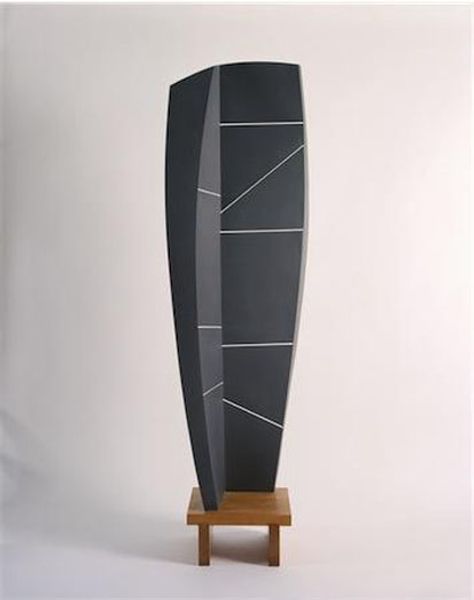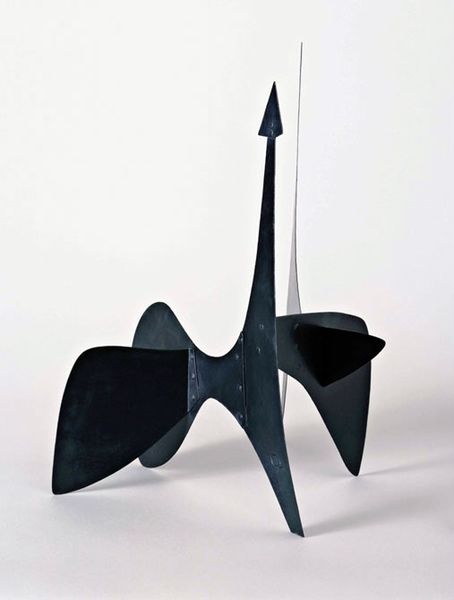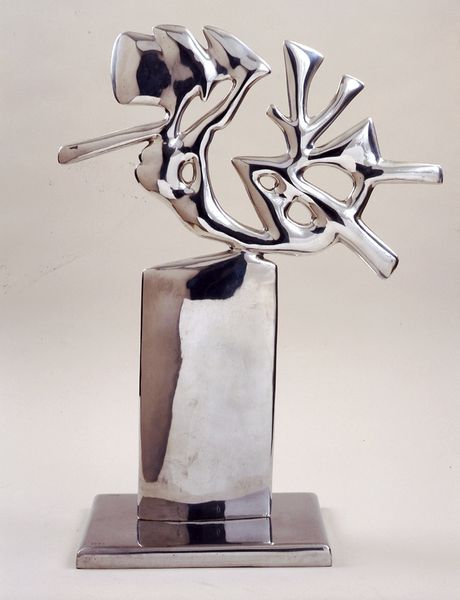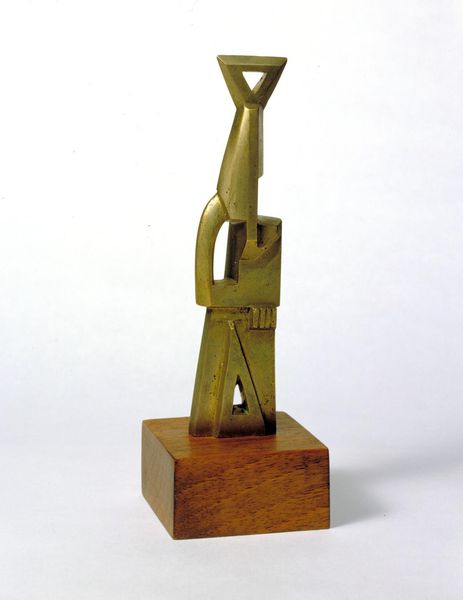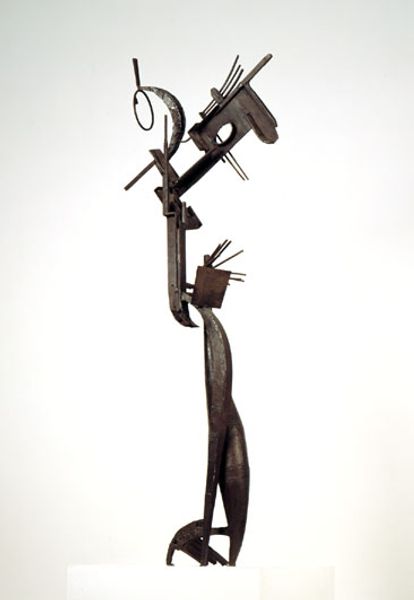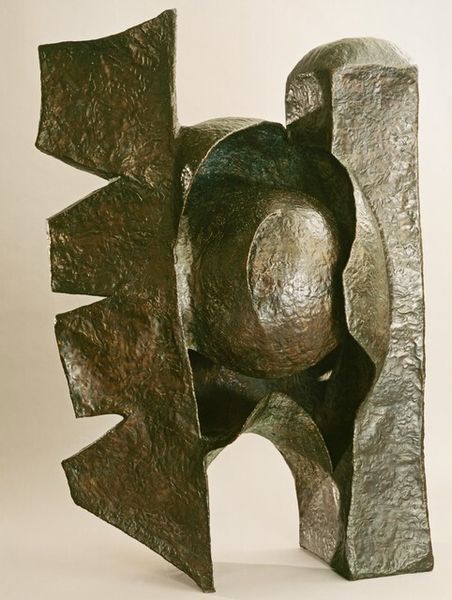
bronze, sculpture
#
abstract-expressionism
#
3d sculpting
#
bronze
#
form
#
geometric
#
sculpture
Copyright: Etienne Hajdu,Fair Use
Curator: Standing before us is "Balkis" by Étienne Hajdu, a bronze sculpture crafted in 1966. My initial reaction is that it's incredibly imposing, almost monolithic. Editor: Monolithic is interesting. It's quite stylized, a slender pillar of dark metal with these flattened, almost wing-like forms emerging at the top. It reads as abstract but also possesses an undeniable organic quality. The smooth surface invites touch; you can almost feel the heat from the casting process. I wonder about the foundry where it was created. Curator: Absolutely. Considering Hajdu's abstract expressionist background, his material selection plays a crucial role. The bronze provides permanence, yet also lends itself to capturing the flowing, organic forms he favors. And given the date, the postwar context certainly inflects its somber tones; bronze often represents something that can resist time, or last, in the wake of turmoil. Editor: True. It makes you think about process and time...The forms are so simplified and sleek but the material whispers a longer story. It seems both timeless and anchored to a very particular moment in the history of sculpture. Did he typically work with bronze at that period? Curator: While Hajdu experimented with multiple media, he seemed to privilege forms made possible through carving marble, and then also employed bronze for achieving lasting statements during his mid-career phase. He clearly leveraged the tactile possibilities of each medium, to convey different dimensions of geometric or representational subjects. He wasn't only interested in the object itself, but in the process behind creating it. Editor: The choice certainly amplifies its presence. In a way, the wings on the top lend it such incredible expression: it resembles a symbol for an angel, ready to descend. Despite the weight of the bronze. Or even better: imagine that form slicing through the air? Curator: Right—that duality of heaviness and lightness, rooted in his interest with form, really defines this work, it invites dialogue, perhaps also in that fraught political period where certain conversations were stifled in post-war culture. Editor: Absolutely, that balance is beautifully struck. Makes me think more deeply now of it capturing both fragility and power simultaneously. It holds many secrets, this “Balkis.” Curator: I agree— it invites contemplation not just of its aesthetic value, but also its complex manufacturing origins. It leaves us to imagine many narratives indeed.
Comments
No comments
Be the first to comment and join the conversation on the ultimate creative platform.
